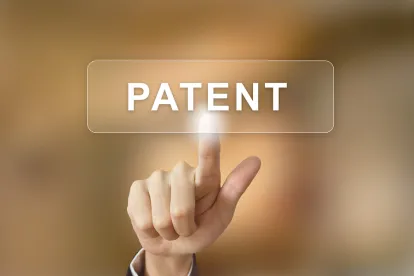Merck Sharp & Dohme Corp. (“Merck”) recently overcame an obviousness challenge at the Patent Trial and Appeal Board (“PTAB”) under pre-AIA law to U.S. Pat. No. 7,326,708 (“the ’708 patent”). Mylan Pharms. v. Merck Sharp & Dohme Corp., IPR2020-00040 (P.T.A.B. May 7, 2021). Under the obviousness challenge, Merck cleverly categorized their own prior art as pre-AIA § 102(e) references, so that it would be excluded under the pre-AIA § 103(c) common ownership exception. Additionally, Merck convinced the PTAB of the unpredictability of crystal formation, and successfully defended their claims as not inherently anticipated. For a discussion of the inherent anticipation arguments, see “Predictably, a Funny Thing Happened on the Way to the PTAB FWD - Part 1; Merck Overcomes Inherent Anticipation Challenge at the PTAB.”
The ’708 patent claims a “1:1 sitagliptin DHP,” a salt comprised of “one phosphate anion” in conjunction with “one sitagliptin amine cation.” DHP is a dipeptidyl peptidase-IV inhibitor used to lower blood sugar and is the primary ingredient in Merck’s highly commercially successful Januvia drug for Type 2 diabetes.
Antedating with WO ’498
Mylan relied on WO 03/004498 (“the WO ’498 publication”) as prior art in their obviousness challenge. Id. at 42. WO ’498 is also owned by Merck and claims peptidase-IV enzymes, or DP-IV inhibitors, used to treat high blood sugar.
Merck argued that their WO ’498 publication qualifies as prior art, but only under pre-AIA § 102(e). Because the WO ’498 publication is commonly owned by Merck, by qualifying the reference as § 102(e) prior art, Merck could exclude the reference from an obviousness consideration under the CREATE act embodied in § 103(c)(1). Id. at 42. Section 103(c)(1) prevents a patent owner’s own prior art reference from being used against them if the reference qualifies as prior art under § 102(e), (g) or (f).
Pre-AIA 35 U.S.C. §102(e): A person shall be entitled to a patent unless — … (e) the invention was described in — (1) an application for patent, published under section 122(b), by another filed in the United States before the invention by the applicant for patent or (2) a patent granted on an application for patent by another filed in the United States before the invention by the applicant for patent, except that an international application filed under the treaty defined in section 351(a) shall have the effects for the purposes of this subsection of an application filed in the United States only if the international application designated the United States and was published under Article 21(2) of such treaty in the English language[.]
Pre-AIA 35 U.S.C. §103(c)(1): (c)(1) Subject matter developed by another person, which qualifies as prior art only under one or more of subsections (e), (f), and (g) of section 102, shall not preclude patentability under this section where the subject matter and the claimed invention were, at the time the claimed invention was made, owned by the same person or subject to an obligation of assignment to the same person.
Mylan, to show that WO ’498 was not a § 102(e) reference, asserted that Merck had not reduced the entire claimed invention to practice before the alleged § 102(e) patent’s publication date. Mylan did not dispute that Merck had reduced the 1:1 sitagliptin salts to practice before the WO ’498 was published or that the WO ’498 and the ’708 patent were commonly owned. Id. at 45. Mylan instead asserted that Merck had not reduced a hydrate form of 1:1 sitagliptin DHP to practice, which was disclosed in the WO ’498 and not excluded in the ’708 patent under attack in Mylan’s IPR. Id. at 45-46. Mylan’s threshold challenge asserted that Merck claimed more in the ’708 patent than they had actually reduced to practice. Id. at 46.
The PTAB took guidance from In re Clarke, 365 F.2d 987 (CCPA 1966), that the antedation issue is resolved by determining “‘how much the reference shows of the claimed invention that is crucial to the requirement.’ In re Clarke, 365 F.2d at 991 (emphasis added). The dispositive question is, thus, whether the evidence shows Merck’s reduction to practice of as much of the claimed invention as is shown in WO ’498.” Mylan, at 47.
The PTAB concluded that WO ’498 is a § 102(e) reference:
[T]he preponderance of the evidence shows that Merck reduced to practice at least as much (indeed, more) of the claimed subject matter versus what is shown in WO ’498. We disagree that, to antedate WO ’498’s publication, Merck needed to prove a prior reduction to practice of the 1:1 sitagliptin DHP hydrate. …. Based on Merck’s undisputed ownership (or ownership right by assignment obligation) at all relevant times of the claimed subject matter and WO ’498, that reference is excluded from consideration for obviousness purposes under pre-AIA § 103(c)(1) for claims 1, 2, 17, 19, and 21–23. Without WO ’498, Petitioner’s § 103 challenge to those claims fails. That leaves claims 3 and 4, for which Patent Owner does not assert a prior reduction to practice, subject to the obviousness challenge.
Id. at 52.
Only the Non-Commonly Owned Remain…
Claims 3 and 4 of the ’708 patent were not commonly owned in relation to the WO ’498, and therefore were not antedated under § 102(e), leaving them as the only claims to be considered for an obviousness analysis. Id. Mylan asserted that claim 3 was obvious over a combination of the WO ’498 publication and an academic publication, referred to as “Bastin.” Id. at 53. Bastin is a publication that teaches “selection of an appropriate salt,” and specifically, discloses the “common” pharmaceutical salts of hydrocholoride, sulphate, or phosphate. Id. at 53-54.
Claim 3 refers to the “salt of claim 1,” or the 1:1 sitagliptin DHP, with an (S)-enantiomer chiral center. Mylan argued that the WO ’498 publication describes a hydrocholoride sitagliptin salt of (R)-enantiomer configuration, and given there are only two possible configurations, this reference, along with the Bastin reference teaching phosphoric acid selection, renders claim 3 of the ’708 patent as unpatentable for obviousness. Id. at 54-55. The PTAB did not find this argument convincing. Id. at 55. The PTAB noted that neither WO ’498 nor the Bastin publication taught the 1:1 stoichiometry, which they already discussed as especially unpredictable in their inherency analysis covered in Part 1 of this article. Furthermore, the Bastin publication did not teach any “specific screening or optimization protocols” for salt selection, but merely gave a high-level overview of different attributes of pharmaceutical salts. Id. at 55. The PTAB noted that because it would not have been obvious to substitute the acids for salt formation, nor reach an (S)-enantiomer configuration, and meet the 1:1 stoichiometry configuration, that claim 3 was not obvious. Id. at 58.
Mylan also asserted that claim 4 was obvious over a combination of the WO ’498, Bastin, and Brittain. Id. Claim 4 refers to the “salt of claim 2 characterized in being a crystalline monohydrate.” Brittain is a book chapter that teaches “approximately one-third of pharmaceutical actives are capable of forming crystalline hydrates,” as well as the “expected trend in which monohydrates are frequently encountered,” where the “frequency decreases almost exponentially as the hydration number increases.” Id. at 59.
Mylan argued that the “frequent” encounters of monohydrate crystalline from Brittain, along with hydrate disclosure from WO ’498, and the salt selection guidance from Bastin, rendered unpatentable claim 4 as obvious. Id. at *59-60. Merck responded, asserting Mylan had failed to “show a motivation to make the crystalline monohydrate of claim 4,” and that the PTAB consistently upholds specific crystal forms as nonobvious due to their unpredictability in the field. Id. at *60.
The PTAB, drawing on their inherency analysis from the first part of the opinion, reiterated the unpredictability of crystal formation. The PTAB noted that Mylan’s own expert, Dr. Chorghade, conceded that it “wasn’t possible to predict when materials will crystallize.” Furthermore, the Brittain reference, which Mylan relied on in asserting a probability-based obviousness argument, actually suggests that only “about one-sixth” of active compounds are even capable of forming a monohydrate. Id. at *65. The PTAB, noting Mylan’s assertions as conclusory, found that claim 4 was not obvious and upheld the patentability of all claims in the ’708 patent. Id. at 69.
Takeaways
The unpredictability of crystalline salt formation remains favorable to patent owners. Petitioners should be cautious in relying on probability-based references in asserting an obviousness argument. In addition to proving the likelihood of a POSA finding a specific crystal formation based on prior art, which in itself is highly unpredictable, petitioners must also prove by a preponderance of the evidence all the other reactive factors, including: salt selection, chiral configuration, and chemical stoichiometry.
Furthermore, for pre-AIA patents, patent owners can continue to be creative in avoiding invalidation by their own prior art and patent references. Section 102(e) in conjunction with the § 103(c)(1) common ownership exception, remains a powerful tool for patent owners if they can prove they reduced their claimed inventions to practice before publishing the patents, just as Merck did with the WO ’498 publication. This tool can protect patent owners, especially from close-call obviousness analyses at the PTAB, by eliminating their own patents as prior art for consideration.
Mylan filed an appeal on July 8, 2021.
Jordan Cowger, a Summer Associate, and Stacy Lewis, a Law Clerk, also contributed to this article.




 />i
/>i
